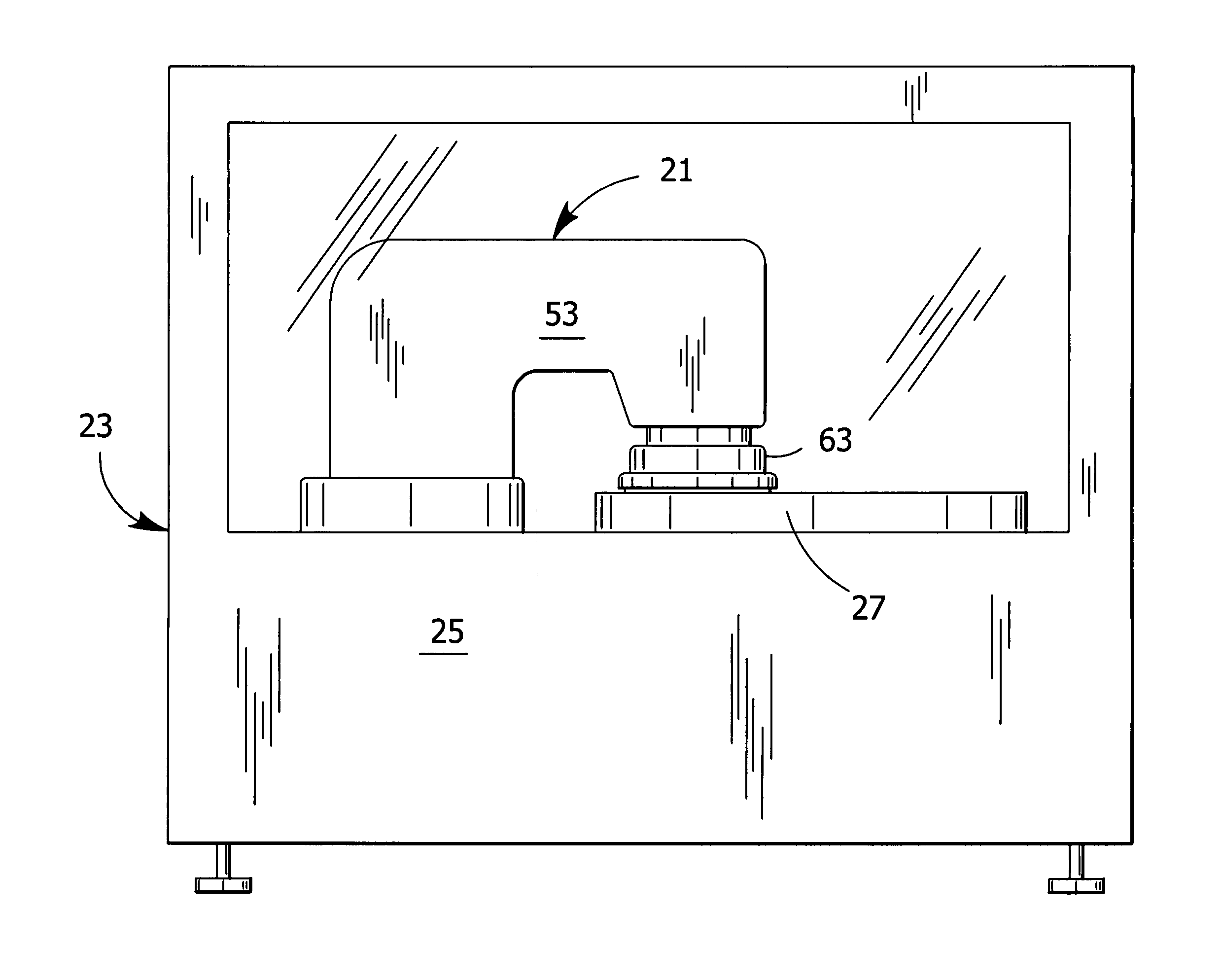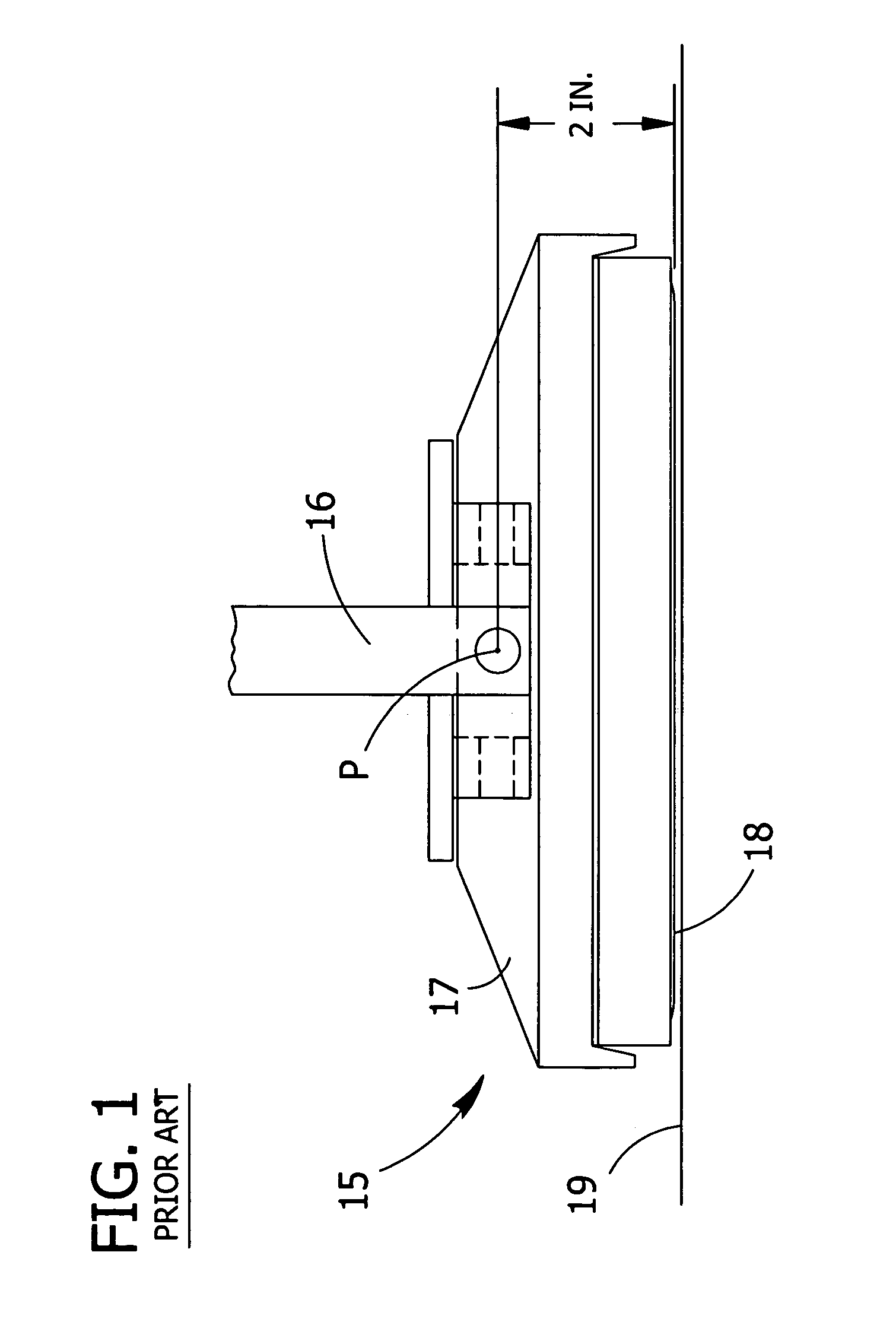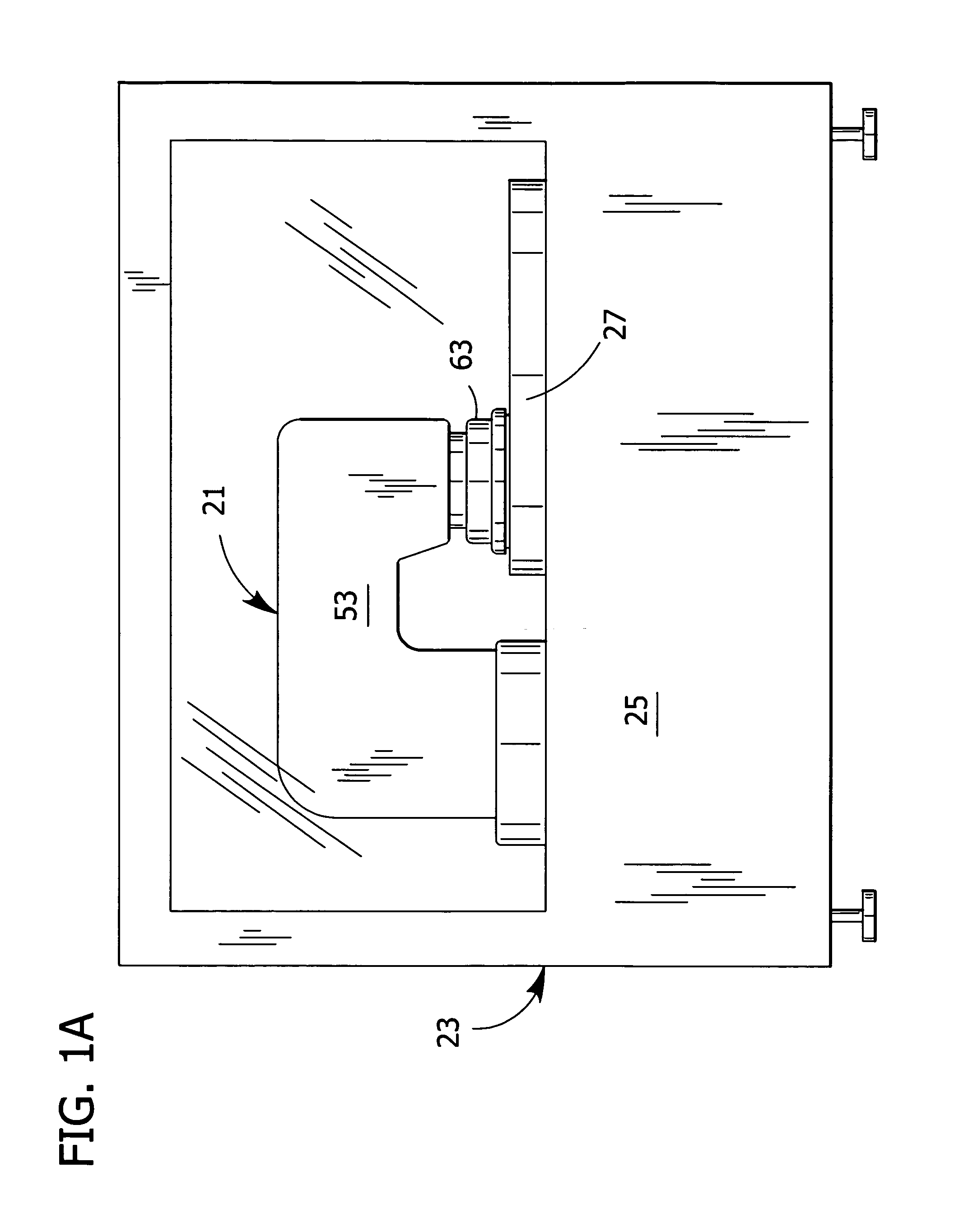Semiconductor wafer, polishing apparatus and method
- Summary
- Abstract
- Description
- Claims
- Application Information
AI Technical Summary
Benefits of technology
Problems solved by technology
Method used
Image
Examples
first embodiment
[0040]The wafer polishing apparatus 21 further comprises a semi-rigid connection, generally indicated at 89, between the drive mechanism 45 and the polishing head 63 for imparting a rotational force from the drive mechanism to the polishing head (FIG. 1B). The semi-rigid connection 89 ensures that the polishing head 63 and drive mechanism 45 rotate conjointly so the control device can regulate the speed of the drive mechanism, and thereby the rotation of the wafer 35. Without the semi-rigid connection 89, the upper bearing member 77 would rotate with the drive mechanism 45 while the lower bearing member 79 and wafer 35 would fail to rotate beneath the spherical bearing assembly 75. The connection between the drive mechanism 45 and the polishing head 63 must be semi-rigid so that the universal pivoting motion of the polishing head with respect to the drive mechanism about the spherical bearing assembly 75 is unaffected by the driving force of the drive mechanism. The semi-rigid conne...
second embodiment
[0047]Turning to the polishing head of the present invention, a polishing head 153 connects to the drive mechanism 45 for driven rotation of the polishing head (FIG. 3). The polishing head 153 is adapted to hold a wafer 35 for engaging a front surface 39 of the wafer with a work surface 37 of the polishing pad 29. The polishing head 153 is attached to the drive mechanism 45 via a spherical bearing assembly, generally indicated at 159, for pivoting of the polishing head about a gimbal point lying near the work surface 37. The polishing head 153 holds the front surface 39 of the wafer 35 in engagement with the polishing pad 29, thereby polishing the wafer and allowing the plane of the front surface to continuously align itself to equalize polishing pressure over the front surface of the wafer for more uniform polishing of a semiconductor wafer.
[0048]A semi-rigid connection, generally indicated at 163, attaches to the drive mechanism 45 and the polishing head 153 for transferring a rot...
third embodiment
[0054]Turning to the polishing head, the present embodiment comprises a polishing head 223 connected to the drive mechanism 45 for driven rotation of the polishing head (FIG. 4). The polishing head 223 is adapted to hold a wafer 35 for engaging a front surface 39 of the wafer 35 with a work surface 37 of the polishing pad. Like the previous embodiment, the present embodiment is directed to providing uniform pressure over the wafer 35 for removal of a uniform layer of silicon from a wafer made flat by a double-side polishing process or a fine grinding process.
[0055]A spherical bearing assembly, generally indicated at 227, connects the polishing head 223 and the drive mechanism 45 for pivoting of the polishing head. The spherical bearing assembly further comprises an upper conical seat 229 and a lower spherical pivot 231, similar to the second embodiment. The upper conical seat 229 is preferably welded to the drive mechanism 45 along a distal end 232 of the drive mechanism, although o...
PUM
| Property | Measurement | Unit |
|---|---|---|
| Fraction | aaaaa | aaaaa |
| Fraction | aaaaa | aaaaa |
| Fraction | aaaaa | aaaaa |
Abstract
Description
Claims
Application Information
 Login to View More
Login to View More - R&D
- Intellectual Property
- Life Sciences
- Materials
- Tech Scout
- Unparalleled Data Quality
- Higher Quality Content
- 60% Fewer Hallucinations
Browse by: Latest US Patents, China's latest patents, Technical Efficacy Thesaurus, Application Domain, Technology Topic, Popular Technical Reports.
© 2025 PatSnap. All rights reserved.Legal|Privacy policy|Modern Slavery Act Transparency Statement|Sitemap|About US| Contact US: help@patsnap.com



